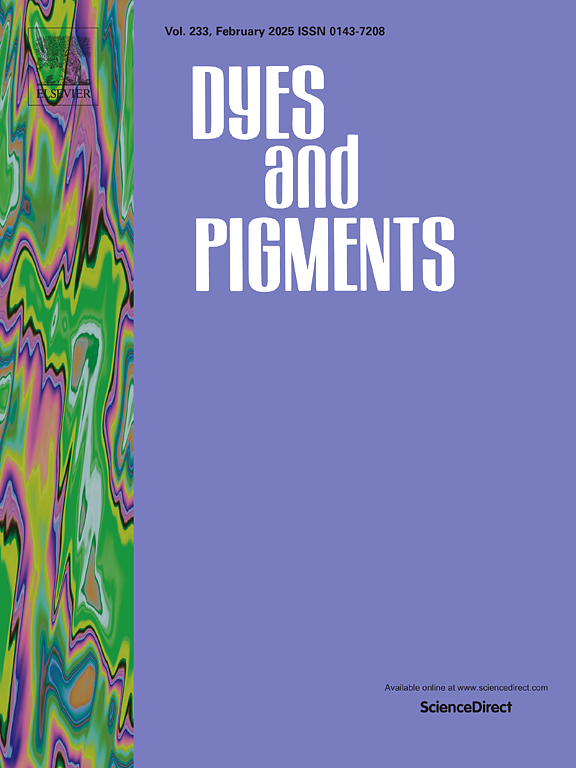Single-component thioxanthone-based photoinitiator for free-radical photopolymerization of acrylates via UV-LED irradiation
IF 4.1
3区 工程技术
Q2 CHEMISTRY, APPLIED
引用次数: 0
Abstract
In this study, three new efficient one-component type II photoinitiators (PIs) for free-radical polymerization of acrylate-type monomers under ultraviolet (UV) light-emitting diode (UV-LED) irradiation were synthesized by covalently linking different coinitiators with a thioxanthone chromophore using a methyl ester linker. UV–visible spectroscopy and electron spin resonance analysis confirmed the generation of free radicals through intramolecular reactions between hydrogen donor coinitiators and the thioxanthone moiety. Real-time Fourier-transform infrared spectroscopy was used to investigate the kinetics of photopolymerization of the prepared PIs. TX-A2 with benzodioxole as a coinitiator showed conversions of 90 % within 20 s for C![]() C double bonds and a polymerization rate of 10.9 %/s, performing considerably better than a commercial PI 2-isopropylthioxanthone and the prepared PIs with anisole and thioanisole coinitiators. These results highlight the significance of intramolecularly incorporated coinitiator moieties in enhancing the performance of efficient single-component type II PIs. In addition, TX-A2 was successfully used for curing color photoresist films, which could be patterned via photolithography and improved the stability of color pigments in the films toward light and heat, indicating its considerable potential in advanced manufacturing.
C double bonds and a polymerization rate of 10.9 %/s, performing considerably better than a commercial PI 2-isopropylthioxanthone and the prepared PIs with anisole and thioanisole coinitiators. These results highlight the significance of intramolecularly incorporated coinitiator moieties in enhancing the performance of efficient single-component type II PIs. In addition, TX-A2 was successfully used for curing color photoresist films, which could be patterned via photolithography and improved the stability of color pigments in the films toward light and heat, indicating its considerable potential in advanced manufacturing.

求助全文
约1分钟内获得全文
求助全文
来源期刊

Dyes and Pigments
工程技术-材料科学:纺织
CiteScore
8.20
自引率
13.30%
发文量
933
审稿时长
33 days
期刊介绍:
Dyes and Pigments covers the scientific and technical aspects of the chemistry and physics of dyes, pigments and their intermediates. Emphasis is placed on the properties of the colouring matters themselves rather than on their applications or the system in which they may be applied.
Thus the journal accepts research and review papers on the synthesis of dyes, pigments and intermediates, their physical or chemical properties, e.g. spectroscopic, surface, solution or solid state characteristics, the physical aspects of their preparation, e.g. precipitation, nucleation and growth, crystal formation, liquid crystalline characteristics, their photochemical, ecological or biological properties and the relationship between colour and chemical constitution. However, papers are considered which deal with the more fundamental aspects of colourant application and of the interactions of colourants with substrates or media.
The journal will interest a wide variety of workers in a range of disciplines whose work involves dyes, pigments and their intermediates, and provides a platform for investigators with common interests but diverse fields of activity such as cosmetics, reprographics, dye and pigment synthesis, medical research, polymers, etc.
 求助内容:
求助内容: 应助结果提醒方式:
应助结果提醒方式:


